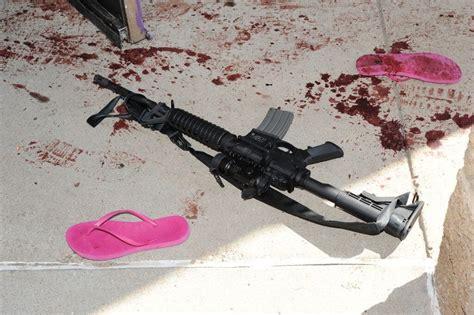
Hamas, other terror groups turn to boobytraps and explosives to attack Israel – analysis
The terrorist groups attacking Israel, particularly Hamas, are turning to the use of explosive devices and booby traps increasingly. This is true in Gaza and also in the West Bank.
On Sunday, the IDF said St.-Sgt.-Maj. (res.) Shlomo Yehonatan Hazut was killed in Gaza by an explosive device hidden on a road. The IDF had cleared the area, but the terrorists were still able to carry out the attack. This illustrates the growing threat of explosive devices and booby traps. These types of devices are called improvised explosive devices, or IEDs.
Hazut was “the seventh soldier to fall in Gaza in four days,” Ynet reported. “Four of the fatalities were killed when IEDs detonated.”
Hazut was in Battalion 9207 of the 16th Brigade.
The IDF said it had conducted the correct procedures in the area where the explosion occurred.
“An initial probe revealed that an infantry force was on the hunt for Hamas underground tunnels and infrastructure on a path that was cleared by heavy machines of the Engineering Corps,” it said. “An IED was likely missed and was detonated remotely by terrorists hiding in a tunnel.”
In another incident, St.-Sgt. Amit Tsadikov of Battalion 202 in the Paratroopers Brigade was also killed by an explosive device on Saturday.
On Friday, an explosive device was detonated near soldiers in Gaza City’s Zeitoun neighborhood near the Netzarim corridor. Two soldiers from the Jerusalem Brigade’s 6301st Battalion were killed and seven were wounded by an explosive device planted on the outside of a building they were searching. This area has been cleared numerous times in the past.
The use of IEDs in Gaza has been growing over the last few months. Hamas has reverted to this method, along with other terrorist groups in Gaza, as a way to fight the IDF without using armed fighters. This is because Hamas lacks the manpower it had last October. It is now using the terrain to its benefit. It knows the area, so it can quietly sneak into homes and areas and leave explosives behind. It has been using this method increasingly.
Terrorist groups are also increasing their use of explosives in the West Bank in areas such as Nur Shams, near Tulkarm, and Jenin and other areas. In addition, they may be seeking to expand the war into other areas of Israel.
For instance, there was an attempt by a resident of Nablus to carry out a bombing in Tel Aviv on August 18. In addition, on Sunday evening, the IDF reported: “A short while ago, an explosive device was detonated on a civilian bus” that was traveling in an area east of Efrat. “IDF soldiers are blocking routes and conducting searches for the suspects in the area.”
The IED threat is growing, and it is growing on multiple fronts
The IED threat is growing on multiple fronts. It includes the attempt by Hamas and other groups in Gaza to revert to using this type of weapon, while groups in the West Bank are also turning their attention to explosive devices.
The overall trend is not unique in the history of terrorist groups and insurgencies. In Iraq, during the Iraqi insurgency against US forces, the use of IEDs was common. Iran helped Iraqi groups improve their explosive devices as well, working with them to create explosively formed penetrators (EFP), which are used against vehicles.
Iran backs Hamas and Palestinian Islamic Jihad. It is also increasingly behind attempts to smuggle weapons into the West Bank.
As the war continues in Gaza, and groups in the West Bank seek to increase their attacks, it is likely they will turn to explosives increasingly as part of their arsenal.
Source » jpost.com





